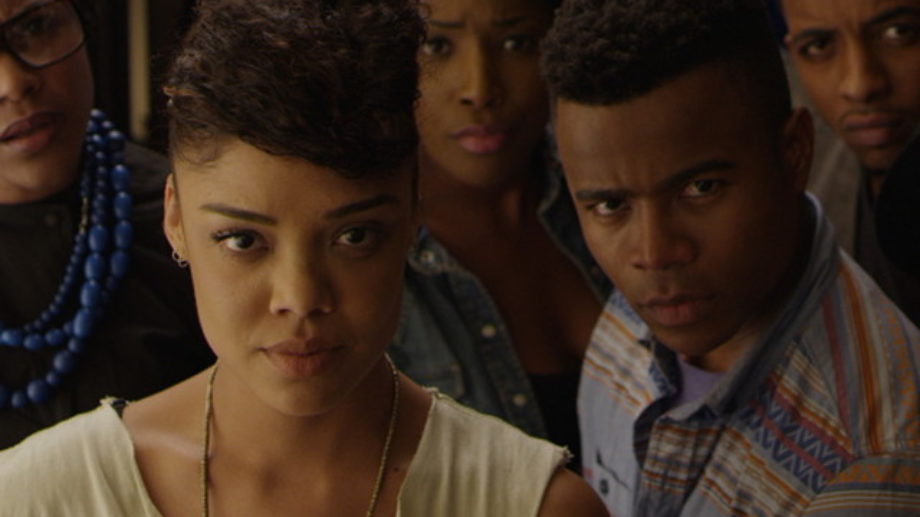
As we head into the weekend, our New Directors/New Films lineup offers an electric group of selections. Everything from horror films (The Babadook), documentaries (We Come As Friends), shorts programs, and more will play at the Film Society of Lincoln Center and MoMA over the next few days.
Screening on Friday and Sunday will be the much-anticipated Dear White People from director Justin Simien. Focusing on race relations on a heavily segregated college campus going through a randomization-housing act, the film is both satirical and polemical in the way it depicts a strong divide between its black and white characters. It also possesses a lot of heart. “I tried to make a movie that I wanted to see and something I would kind of get my life from,” recalled Simien to The Daily Buzz at the film’s Sundance premiere. “It seems to be warmly received by black folks, white folks, anybody who understands what it feels like to be an ‘other’ at some point in their lives.”
Dear White People
Justin Simien, USA, 2014, 108m
Description: Welcome to Winchester University where, in the name of diversity, the all-black residence hall Parker/Armstrong is about to be dismantled. In the middle of an Ivy League campus, all racial hell breaks loose: Samantha White (Tessa Thompson) uses her campus radio show to call out the administration as well as her fellow students, while Afroed geek Lionel (Tyler James Williams) writes for the all-white college newspaper hoping to expose hypocrisy campus-wide. No one is safe in the culture wars that follow. In his feature debut, Justin Simien riffs on groundbreaking films of the black experience of a generation ago (yes, really) to playfully explore the gray areas of race in America, and his satirical take challenges our ideas of identity in our supposed post-racial world.
Responses from Justin Simien:
I didn't know what it was called, but I wanted to do it:
Whether it was—badly—drawing homemade comic books or playing with action figures with one eye open, to control the depth of field of course, I was always looking for ways to put stories together visually as a kid. At around 10 or so it dawned on me that it must be someone's job to create the stuff on TV and in movie theaters. I didn't know that had a name per se at the time, but I knew it was what I wanted to do.
On crafting an homage to black filmmakers of the past:
Part of it was my experience of consistently being a black face in very white places, along with the fact that so many people were having a similar experience but it wasn't being represented in the “black stories” in the culture. I also wanted to pay homage to the once popular “black smart-house,” that special breed of cinema that blossomed in the late ’80s/early ’90s, thanks to filmmakers like Spike Lee, Robert Townsend, and John Singleton, to name only a few.
Allowing the cast to find their way:
Every actor is different and needs a different kind of support from their director. My job is to best articulate the intention of the story beats in a way that is playable, and from there, troubleshoot any obstacles we run into telling the story. Some actors need space to figure it out and some enjoy a more hands-on approach. Working with actors is one of the most fulfilling aspects of directing for me.
On finding his fanbase and supporters:
[My biggest challenges] were time and money, of course. But also convincing people whose gut told them this is a good idea to ignore the fact that there hasn't been a movie like it in recent years and jump in!
Looking toward the future:
I have a few irons in the fire. Very excited to announce some TV and film projects in the near future.



